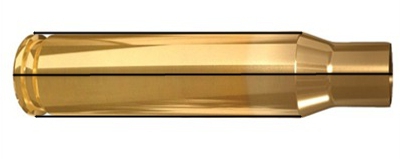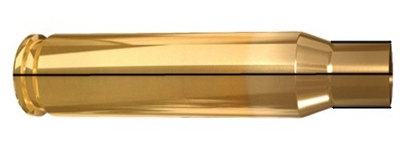Bullet Concentricity and Related Issues

 Sinclair International has released an interesting article about Case Concentricity* and bullet “run-out”. This instructional article by Bob Kohl explains the reasons brass can exhibit poor concentricity, and why high bullet run-out can be detrimental to accuracy.
Sinclair International has released an interesting article about Case Concentricity* and bullet “run-out”. This instructional article by Bob Kohl explains the reasons brass can exhibit poor concentricity, and why high bullet run-out can be detrimental to accuracy.
Concentricity, Bullet Alignment, and Accuracy by Bob Kohl
The purpose of loading your own ammo is to minimize all the variables that can affect accuracy and can be controlled with proper and conscientious handloading. Concentricity and bullet run-out are important when you’re loading for accuracy. Ideally, it’s important to strive to make each round the same as the one before it and the one after it. It’s a simple issue of uniformity.
The reason shooters work with tools and gauges to measure and control concentricity is simple: to make sure the bullet starts down the bore consistently in line with the bore. If the case isn’t properly concentric and the bullet isn’t properly aligned down the center of the bore, the bullet will enter the rifling inconsistently. While the bore might force the bullet to align itself with the bore (but normally it doesn’t), the bullet may be damaged or overstressed in the process – if it even it corrects itself in transit. These are issues we strive to remedy by handloading, to maintain the best standard possible for accurate ammunition.
The term “concentricity” is derived from “concentric circle”. In simple terms it’s the issue of having the outside of the cartridge in a concentric circle around the center. That goes from case head and center of the flash hole, to the tip of the bullet.
Factors Affecting Concentricity
The point of using this term is to identify a series of issues that affect accurate ammunition. Ideally this would work best with a straight-walled case; but since most rifle cartridge cases are tapered, it equates to the smallest cross section that can be measured point by point to verify the concentric circle around the center. For the examples below, I’m working with .308 Winchester ammo.

Figure 1: The cartridge.

Figure 2: Centerline axis of the case, extending from flash hole to case mouth.
The case walls have to be in perfect alignment with the center, or axis, of that case, even if it’s measured at a thousandth of an inch per segment (in a tapered case).

Figure 3: Case body in alignment with its axis, or centerline, even in a tapered case.
The case neck must also be in alignment with its axis. By not doing so you can have erratic bullet entry into the bore. The case neck wall itself should be as uniform as possible in alignment and in thickness (see the M80 7.62x51mm NATO cartridge in Figure 5) and brass can change its alignment and shape. It’s why we expand the case neck or while some folks ream the inside of the neck and then turn the outside for consistent thickness, which affects the tension on the bullet when seated.

Figure 4: Neck in alignment with center of the case axis.

Figure 5: Variations in case neck wall thickness, especially on some military brass, can cause an offset of the bullet in its alignment. This is an M80 ball round. Note the distinct difference of the neck walls.
Having a ball micrometer on hand helps, especially with military brass like 7.62x51mm in a semi-auto rifle, where there are limits as to how thin you want the neck walls to be. In the case of 7.62 ball brass you want to keep the wall to .0145″.

Figure 6: A ball micrometer like this RCBS tool (#100-010-268) can measure case neck thickness.
Turning the outside of the neck wall is important with .308 military cases regardless of whether you expand or ream the neck walls. There are several outside neck turning tools from Forster, Hornady, Sinclair, and others. I’ve been using classic Forster case trimming (#100-203-301) and neck turning (#749-012-890) tools for 40 years.
Bullet Run-Out
The cartridge, after being loaded, still needs to be in alignment with the center of the case axis. Figure 7 shows a bad example of this, a round of M80 ball. A tilted bullet is measured for what’s known as bullet “run-out”.

Figure 7: An M80 round with the bullet tilted and not aligned with the axis. This will be a flyer!
Run-out can be affected by several things: (1) improperly indexing your case while sizing, which includes not using the proper shell holder, especially while using a normal expander ball on the sizing die (it also can stretch the brass). (2) The head of a turret press can flex; and (3) improper or sloppy bullet seating. This is also relevant when it comes to using a progressive press when trying to load accuracy ammo.
Mid Tompkins came up with a simple solution for better bullet seating years ago. Seat your bullet half way into the case, back off the seater die and rotate the case 180 degrees before you finish seating the bullet. It cuts down on run-out problems, especially with military brass. You also want to gently ream the inside of the neck mouth to keep from having any brass mar the surface of the bullet jacket and make proper seating easier. A tilted bullet often means a flyer.

Figure 8: Proper alignment from the center of the case head to the tip of the bullet.
CLICK HERE to READ FULL ARTICLE With More Photos and Tips
*Actually some folks would say that if we are talking about things being off-center or out-of-round, we are actually talking about “eccentricity”. But the tools we use are called “Concentricity Gauges” and Concentricity is the term most commonly used when discussing this subject.
Story Tip from EdLongrange. We welcome reader submissions.Similar Posts:
- Bullet Concentricity and Alignment — What You Need to Know
- Bullet Concentricity and Alignment — Key Things to Understand
- Concentricity, Bullet Alignment, and Accuracy — Basic Principles
- Bullet Concentricity Basics — What You Need to Know
- H&H Concentricity Gauge and Bullet Straightener
Tags: Concentricity, Eccentricity, Precision, Reloading, Run-Out, Sinclair International


















This is exactly what German Salazar has been discussing on his blog for years. Nothing new here.
Perhaps not, but Sinclair and Accurateshooter both have a significantly larger footprint than German, despite his clear expertise and writing ability. If for that reason only this article was published, it would have been worth it, so Bigguy, your post is a little irrelevant to the progress being made.
Furthermore, if you think that German is the orignator of this wisdom, you are mistaken by at least 2 centuries.
Question, If your free bore diameter is not huge, then would not the bullets self align? Lite neck tension and jammed bullets are kind of a way to correct human error.
I recently had my .280AI doing my head in. Groups with new Nosler brass were around 1/4MOA yet once I started neck sizing them my groups blew out to over an inch. Turns out my Redding neck die was introducing 0.008″ runout whereas my FL die was under 0.002″. Only worked out what was going on after purchasing a 21st Century runout guage. I love Redding gear but even they let the odd bad one slip through. I have a dozen other sets of Redding dies with no issues. Without a concentricity gauge I’d have been none the wiser.
I continue to read about how much runout is too much or how much is acceptable. Could someone please tell me how these numbers mean anything? The spot you pick to make your measurement affects the number you get. I am no mathematician but it is visibly evident that the farther from the case (or closer to the bullet tip if you prefer)you look at, the bigger the reading you will get. It seems to me that the only relevant number as gar as comparison is concerned is zero.